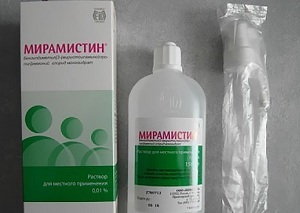 Miramistin is an antimicrobial antibacterial drug intended for external use. The drug is effective against a number of microorganisms and pathogens. The medication is allowed to apply not only to adults, but also to children.
Miramistin is an antimicrobial antibacterial drug intended for external use. The drug is effective against a number of microorganisms and pathogens. The medication is allowed to apply not only to adults, but also to children.
The product is available as a solution, ointment and spray. The choice of dosage form depends on the area of application of the drug.
Contents
- How to use
- How to use the
- How to use the
- How to use
- How to use
- How to treat stomatitis
- How to use thrush
- For rhinitis and sinusitis
- How to instill ears with otitis
- Rinse with throat diseases
- Usage for adenoids
- Use Miramistine for conjunctivitischildren
- Treatment of varicella
- Treatment of the smallest - the moment responsible
- How to do inhalations in the nebulizer
- What it is worth remembering the birthpits?
- What should I do if my baby swallows medicine?
- What if the solution gets into the eyes?
- Viewpoint
- How to use
For what purposes and at what age do they prescribe the remedy for children
Miramistin is indicated in the treatment of such diseases in children:
- infectious diseases of the throat( tonsillitis, pharyngitis, tonsillitis and others);
- dental diseases( stomatitis, gingivitis, periodontitis and others);
- thrush and chickenpox;
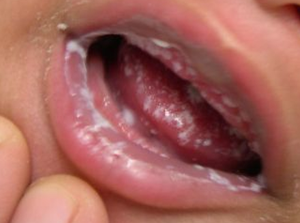
- as a means for rinsing and instillation of the nose in rhinitis and sinusitis;
- for the treatment of auditory canals in otitis;
- with inflamed adenoids;
- as a solution for inhalation and rinsing for colds;
- for the treatment of lesions on the skin( wounds and burns);
- for the prevention of throat and mouth.
Miramistin is recommended for treatment of children aged 3 years, however, in some cases it is permissible to prescribe medication and infants.
The rationale that Miramistine can be used to treat children from an early age, even to the breast:
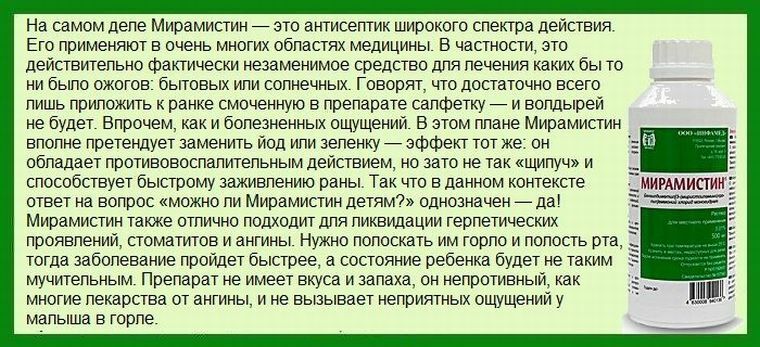
Instruction for use
The drug has a positive effect in the therapy of a number of childhood diseases. The choice of the form of release, the features of use and the specific dosages depend on the type of illness.
Treatment of stomatitis
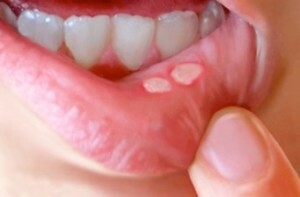 The causes of stomatitis in children are dysbiosis, damage to the oral mucosa, as well as uncontrolled use of antibiotics.
The causes of stomatitis in children are dysbiosis, damage to the oral mucosa, as well as uncontrolled use of antibiotics.
Apply miramistin with stomatitis in its pure form, to breed it even for the treatment of children is not necessary. It is recommended to rinse the mouth 3-4 times a day, using 15 ml of the drug per procedure.
The drug helps not only to destroy bacteria, but also to repair damaged shells.
Use for thrush
In the treatment of candidiasis in children, different forms of Miramistine are used depending on the area of the lesion:
- spray for oral dispersion;
- ointment for the treatment of damaged skin;
- solution for compresses in the places of fungal attack.
The product will help not only accelerate the healing of damaged areas, but also relieve itching.
Use in the common cold and sinusitis
With a cold, you can use a medicine in the form of a spray and a solution. With the help of the first, the nasal sinuses are irrigated with a single 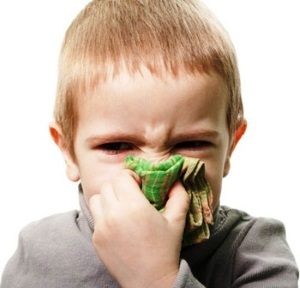 by pressing the nozzle 3-4 times a day.
by pressing the nozzle 3-4 times a day.
In sinusitis and rhinitis, Miramistin solution is poured into the nose of the child and the sinuses and nasal cavity are washed. This is done as follows: the baby's head is tilted to the right side and poured 10-15 ml of solution into the left nostril.
After the fluid is poured back, repeat the manipulations with the right nostril.
Ear instillation with otitis
There are 2 ways of using the drug in pediatric otitis:
- 2 drops of solution are instilled into the ear canal twice a day;
- is moistened with a cotton swab solution and injected into the ear for 20 minutes 3-4 times a day.
The use of the drug helps prevent purulent inflammation in the auditory canals.
Rinse with diseases of the throat
With angina, SARS, pharyngitis and tonsillitis Miramistin is bred with water and rinses up to 5 times a day. The dosage of the drug is determined depending on the age of the patient, the recommended volume per procedure is:
- 3 to 6 years - 3-5 ml;
- from 7 to 14 years - 5-6 ml;
- from 14 years - up to 10 ml.
Effectively alternate rinses with a preparation and solutions of soda or salt.
Usage for adenoids
With an increase in adenoids, the drug is used for administration in the nose. To act in this way:
- put the child on his back, placing a pillow or roller under his head;
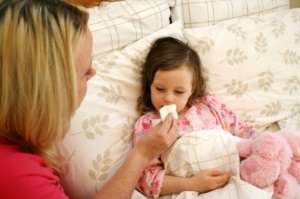
- enter into the nostrils of 1-2 drops of solution;
- leave malashes to lie down for 3-5 minutes, so that the product flows down to the inflamed areas.
Duration of treatment is from 5 to 7 days.
In addition to dental and ENT diseases, the drug is used in a number of other cases. These include conjunctivitis, chicken pox and other diseases.
Use of Miramistine for conjunctivitis in children
In case of this unpleasant disease, an antiseptic solution can be used by one of the following methods:
- instill 1 drop into each eye three times a day, and then massage the eyelids a little so that the solution is distributed evenly.
- wipe your eyes with a cotton sponge soaked in a medicinal liquid, 3 to 4 times a day.
Treatment of chicken pox
This disease is characterized not only by rashes on the skin, but also by lesions of the mucosa in the oral cavity.
To remove the itching and accelerate the healing of skin rashes, it is recommended to make bandages and compresses with a solution of the drug, and for the oral cavity show rinses 3 to 5 times a day.
Treatment of the smallest - the moment responsible
In some cases, it is permissible to use Miramistin and for the treatment of the youngest babies under the age of one year.
You can use the medicine for such purposes:
- Irrigation of the throat with reddening ( SARS and other infectious diseases).In such cases, it is necessary to use a spray and irrigate the baby's throat with a single press 2-3 times a day. Treatment continues until the redness disappears. However, if in 3-4 days there will be no improvement, you need to inform the attending physician, you may need to replace the drug.
- Otitis therapy .In diseases of the auditory canals in infants, use of turundas soaked in a solution of the drug is not recommended, since there is a risk of damaging the fragile organ of the baby. Better to instill the drug in the ear, 1-2 drops 2 times a day.
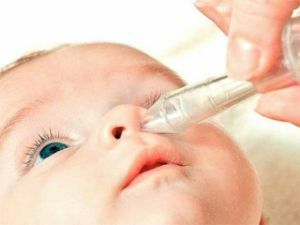
- Nasal instillation with runny nose .When the baby has a spout, the remedy should be taken very seriously, some drugs can cause dryness and burning, irritating the mucous membrane. Miramistin in this case is completely safe and will not cause any side effects, you will need to collect a small amount of solution in the pipette and drip an antiseptic in the nose of the baby 1 drop into each nostril. It is very important to monitor the amount of the drug and not exceed the recommended dose.
- Irrigation of the oral cavity with inflammation of the mucosa ( stomatitis and others).In dental diseases associated with inflammatory processes of the oral cavity, a drug in the form of a spray is used. It is necessary to irrigate the mucous by a single press on the nebulizer 2-3 times a day. The duration of the course is determined by the attending physician.
How to do inhalations in a nebulizer
Inhalations with Miramistin in a nebulizer will help accelerate the recovery process for colds and a strong cold, suitable for children from 3 years. To achieve maximum effect, the procedure should be carried out in accordance with certain rules:
- to begin treatment with inhalations at the first signs of the disease;
- carry out the procedure for at least 5 minutes( maximum duration is 15 minutes);
- use 3 to 4 ml of solution for one inhalation;
- should be treated at least 3 times a day;
- for children up to 12 years of age to dilute the medicinal product with saline in a proportion of 1: 2, for children older than this age, the medication is used in its pure form.
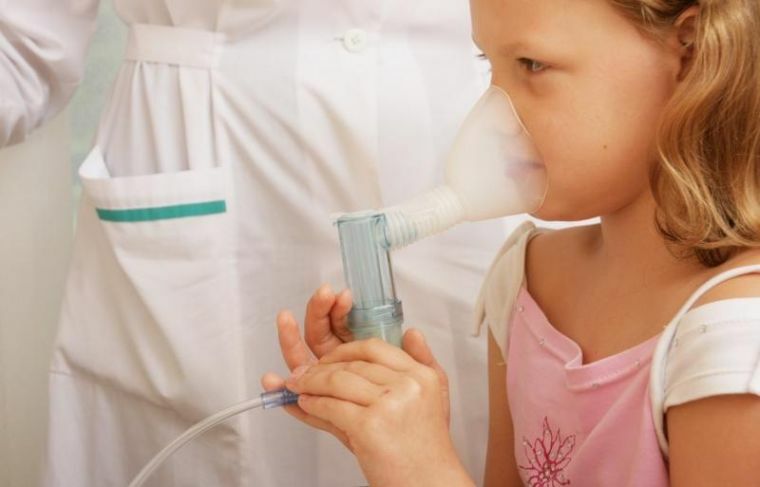
Inhalation in a nebulizer is effective and simple.
What should parents remember?
When treating Miramistin, the following precautions should be observed:
- follow the prescribed dosage and regimen of the drug;
- with irritation and swelling of mucous membranes should be discontinued use of the medication and consult a doctor, as this may indicate an overdose;
- using a medicine to treat a child under the age of 1 year, it is better to use a spray;
- is prohibited from prescribing to children who are hypersensitive to the components of the drug.
In most cases, small patients tolerate the drug well. There may be a slight burning sensation when the antiseptic hits the mucous membrane, but unpleasant symptoms go away after 15-20 seconds.
In some cases, irritations on the skin are noted as a result of external treatment. These manifestations require withdrawal of the drug.
What should I do if my baby swallows medicine?
The drug belongs to antibacterial agents, which means that it damages not only the pathogenic microflora on 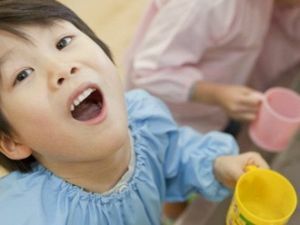 , but also destroys beneficial bacteria. The least trouble that can threaten a baby, if he drinks a solution - is the emergence of dysbiosis.
, but also destroys beneficial bacteria. The least trouble that can threaten a baby, if he drinks a solution - is the emergence of dysbiosis.
If the dose is too high, symptoms of poisoning appear: nausea, diarrhea and cutting pain in the abdomen. In this case, give the child plenty of water and induce vomiting. However, you can do this if after getting the antiseptic in the body was no more than 30 minutes.
In a situation where it took more than half an hour, it is required to give the baby 1-2 tablets of activated charcoal, put the baby on its side and call an ambulance.
What if the solution gets into the eyes?
This drug often causes burning sensation when it gets into the mucous membrane. If a child has poured an antiseptic solution into his eyes, rinse them with plenty of water and seek medical help immediately.
Viewpoint
A practitioner's opinion and feedback from parents who use Miramistine to treat their babies.
Miramistin is an effective antiseptic for a wide range of applications. The main advantage is its peculiarity to influence a number of pathogenic bacteria and microbes that provoke various diseases. If properly used, the drug will not harm even the smallest patients.
In addition, it does not have a pronounced taste, which greatly facilitates the treatment of the mouth and throat of children, without giving the kids unpleasant sensations.
Sergey Nikolaevich, pediatrician, 13 years of experience
I had to stop using this tool. My daughter had stomatitis, we were prescribed a solution for mucosal treatment. But her daughter cried so much and complained of a burning sensation in her mouth after each procedure that it was required to select another medicine.
Lina, 25
With colds and SARS, we just save ourselves. When the child has a sore throat and painful swallowing this drug can ease the condition in just a few hours. Significant improvement is noticeable after only 2-3 applications.
Mom of two children
I treated my daughter with this solution by this solution. Apply for the throat in infancy I would be careful, but for the skin this is an ideal option. Rednesses quickly pass and not so disturb the kid.
Nina, 29
In a house where there are children, there must always be the necessary medications, including antiseptic action. The main advantage of Miramistin is that it can be used for a variety of diseases, as well as for treating wounds, cuts, scratches and burns that often occur in restless children. The drug is safe, practically has no contraindications and in most cases does not cause discomfort as a result of the application.
The following medicines have a similar effect on the pathogenic microflora: 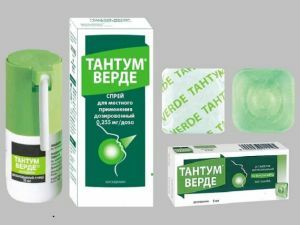
- Octenisept;
- Chlorhexidine;
- Tantum Verde;
- Dekasan.
If a small patient is for one reason or another contraindicated Miramistin, the selection of an analogue should only be done by the attending physician.
